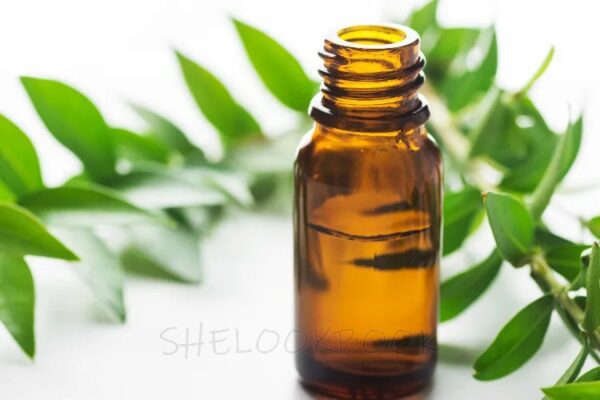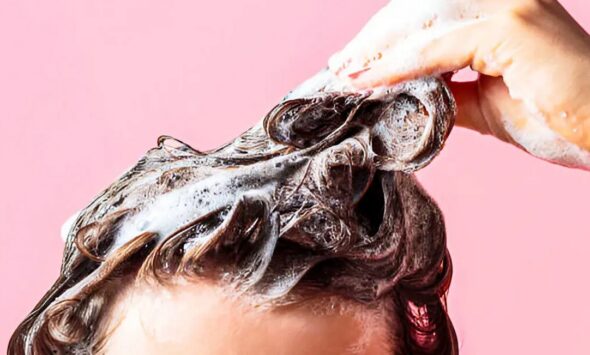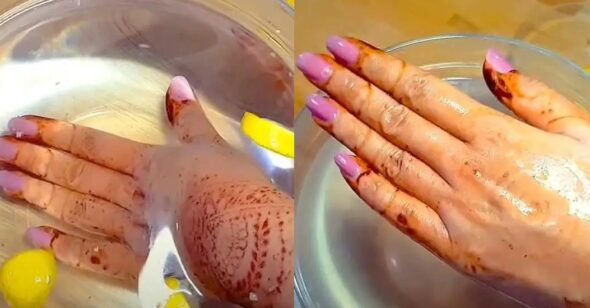Tea tree oil is considered a panacea and helps against pimples and bad breath. What else it can do and how to use it correctly
Tea tree oil—you’ve probably heard about it or read about it in cosmetic products or medications. I have no idea what that’s supposed to be. Tea tree oil is something like nature’s panacea that can fight pimples, dandruff, and fungal infections.

What is tea tree oil, and where does it come from?
Tea tree oil has nothing to do with tea. It is an essential oil that is obtained from the leaves of the tea tree using steam distillation. The plant grows, Zum Beispiel, in Australia, where its leaves have been used as a traditional medicine by the indigenous people for ages.
see also: Frisuren 2025 & Haarschnitte: Die beliebtesten Schnitte und Haarfarbentrends
A little excursion into history: During colonialism, the occupiers discovered that the Aborigines treated wounds, insect bites, and skin infections with poultices made from the leaves.
They prepared tea and infusions to relieve sore throats and coughs. Because it worked, the medicinal plant was gradually passed on to Western doctors’ practices before the oil obtained from it was finally made available for home use around 1920.
Heute, tree oil is found in numerous cosmetic products, from shampoo to anti-pimple cream. And you can still buy it in its pure form. Because that’s why it’s particularly popular.
How does tea tree oil work?
Science proves what Aboriginal people have known for a long time: tea tree oil is a type of natural antibiotic. The “terpenes” contained in it, which make up around 40 percent of the pure oil, are primarily responsible for its healing properties. Terpinenes work…
- …anti-inflammatory,
- …antibacterial,
- …kills fungi
- and support wound healing.
Due to its healing properties, tea tree oil belongs in every well-stocked medicine cabinet. But it doesn’t just help against inflammation. For example, you can also use it together with these anti-pimple tips to treat skin blemishes, oily scalps, dandruff, and bad breath. But tea tree oil should be consumed with caution. Because it is so strong, it can irritate the skin, so you need to use it correctly and choose the right product.
How do you recognize good tea tree oil?
Even today, high-quality, pure tea tree oil still comes predominantly from Australia and New Zealand. Cheap products from other countries, mostly Indonesia, should be treated with caution. They are often adulterated with inferior oils because pure tea tree oil is very expensive.
To explain: One ton of tea tree leaves only produces around 10 liters of pure oil, hence the high price. Jedoch, if it is no longer a pure product, the healing effect is correspondingly reduced.
What can you use tea tree oil for?
There are numerous uses for tea tree oil. But If you have never used it before, you should always test it on an inconspicuous area of skin first, for example on the inside of your forearm. No redness, no burning, and no dry skin? Then you can use it! And like this:
Against oily, impure skin: Sometimes you have to fight fire with fire—and sometimes oil with oil. For oily skin, tea tree oil helps keep sebum production in check. Welche, along with the antiseptic properties of the essential oil, can help reduce breakouts. But never apply the oil straight to the entire face. Better: Dilute with another oil, Zum Beispiel,, jojoba or argan oil. In a dark glass bottle, mix two teaspoons of carrier oil with 15 drops of tea tree oil to achieve a concentration of about five percent. This is the perfect dose for caring for impure skin.
As an SOS pimple remedy, soak a cotton swab in water and then drip a drop of tea tree oil onto the tip and tap it directly on the pimple. Thanks to the antibacterial properties of the essential oil, the inflammation subsides more quickly.
Against bad breath: Because tea tree oil kills bacteria, you can also use it as an ingredient in homemade mouthwash against bad odors. Mix a small amount (one or two drops is enough) with a sip of warm water and gargle for about 30 seconds once or twice daily.
For fresh hair, there are good reasons why tea tree oil is found in numerous shampoos. It is a natural cleanser, helps against itching and dandruff, and removes residues of care and styling products from the scalp. Mix 2 drops of the shampoo in the palm of your hand and wash your hair as usual. tingles and promotes blood circulation.
As a natural hand disinfectant: Most disinfectants are based on alcohol and chemicals, which can irritate the skin. You can also simply rub a few drops of tea tree oil into your palms to kill bacteria.
To speed wound healing, tea tree oil is a good choice for treating minor scratches and wounds due to its ability to fight fungi and bacteria. Simply apply it directly to cleansed skin two to three times a day to speed up the healing process.
see also: Möglichkeiten, Haarausfall zu stoppen – Hausmittel und Tipps zum Nachwachsen der Haare
Against foot and nail fungus: Tea tree oil has a fungicidal effect, which means it fights fungal diseases. It is therefore a popular home remedy for foot and nail fungus. You can try this as a supplement to prescribed ointments and tinctures, but you should still see a doctor.
What do you have to consider when using tea tree oil?
Although it sounds like a miracle cure, Leider, tea tree oil is not suitable for everyone. People with sensitive skin in particular should be careful. Just because something is natural does not mean that it is more effective or even gentler than a chemical product. Tea tree oil can be very irritating to the skin, in some cases even more so than synthetic anti-pimple products. Dry skin that peels, burning, and itching can result.
Be careful; it is addictive: Anyone who has tried tea tree oil once and tolerated it well will probably want to use it forever and for everything. The smell alone is addictive.


